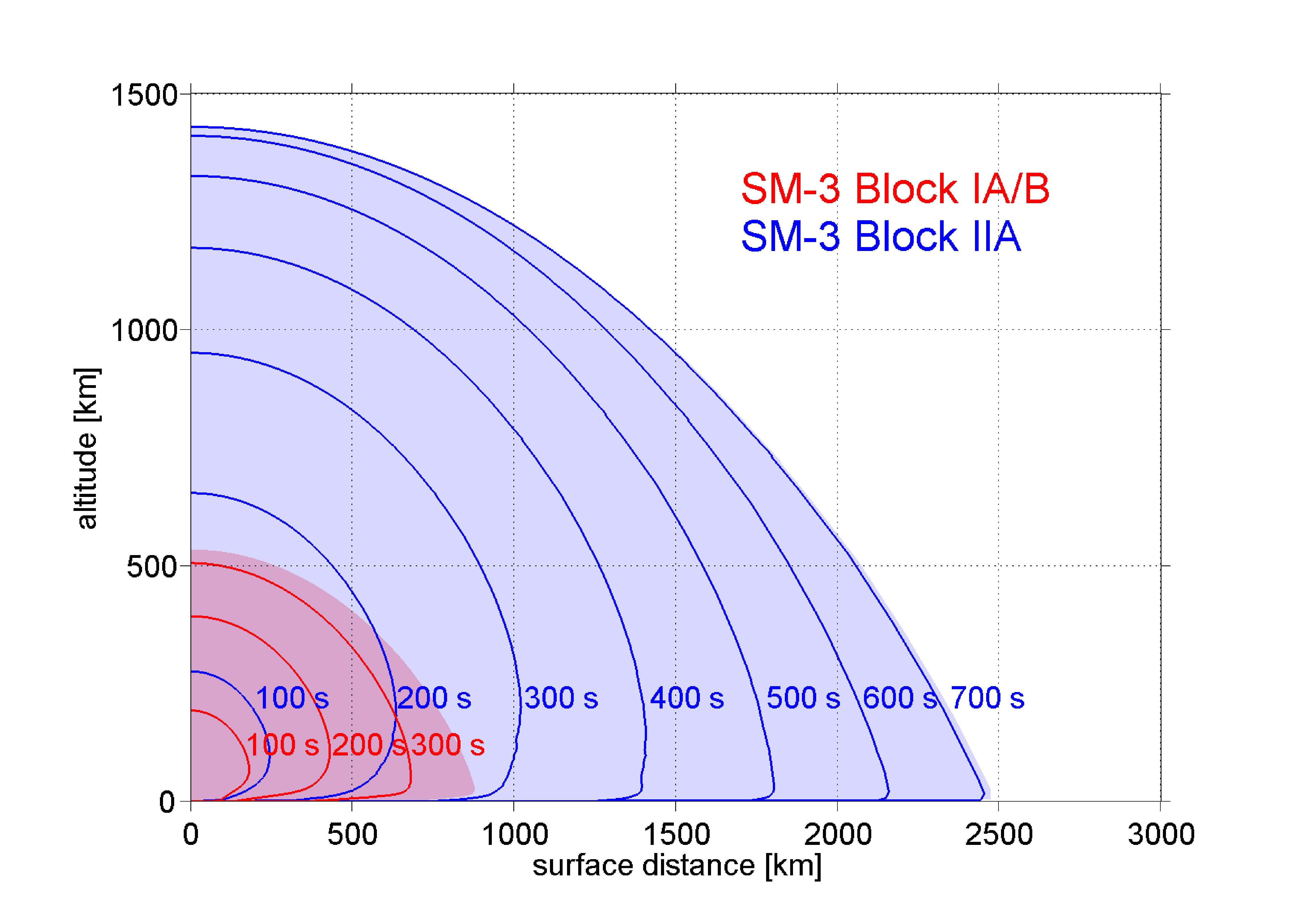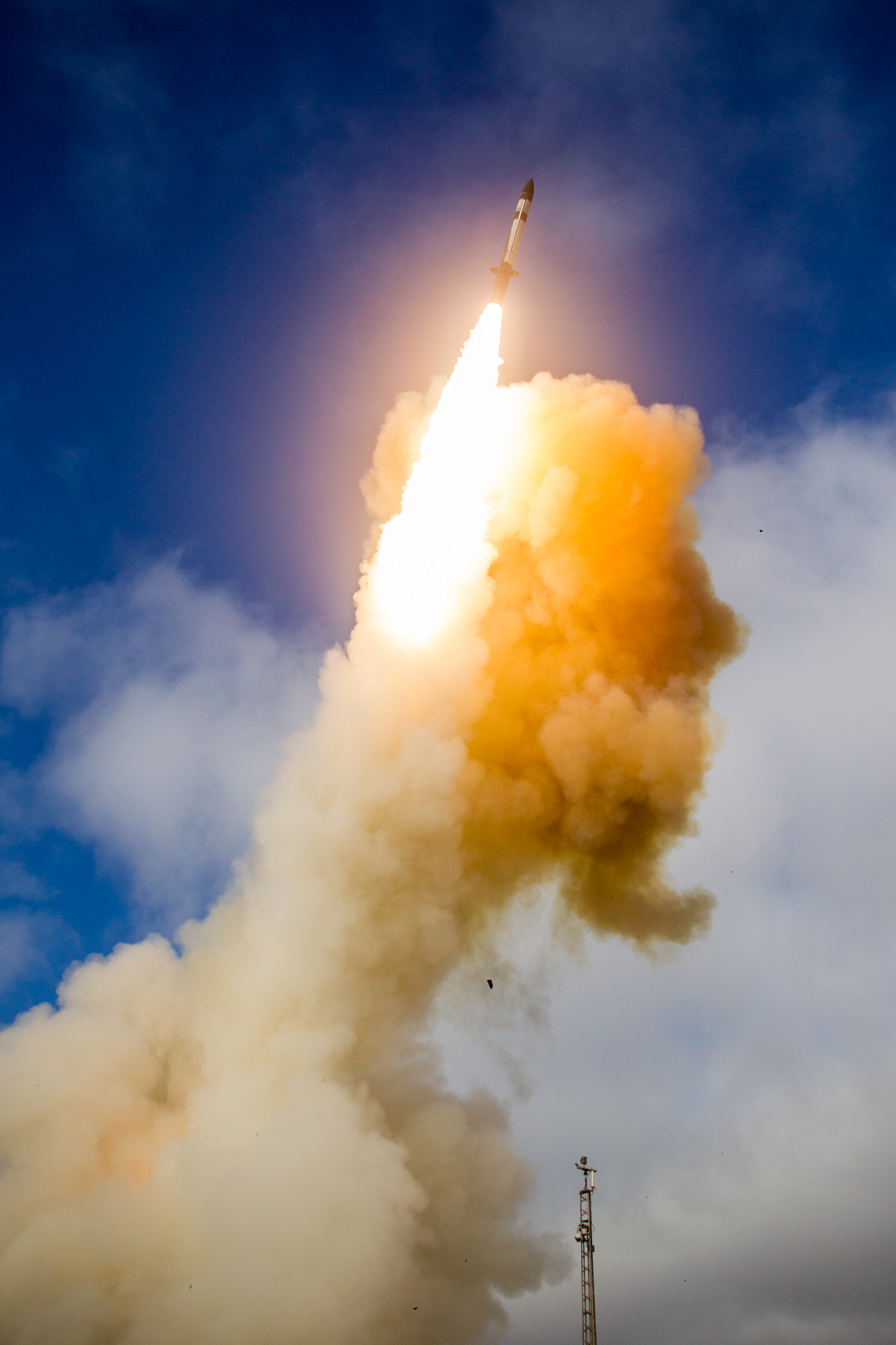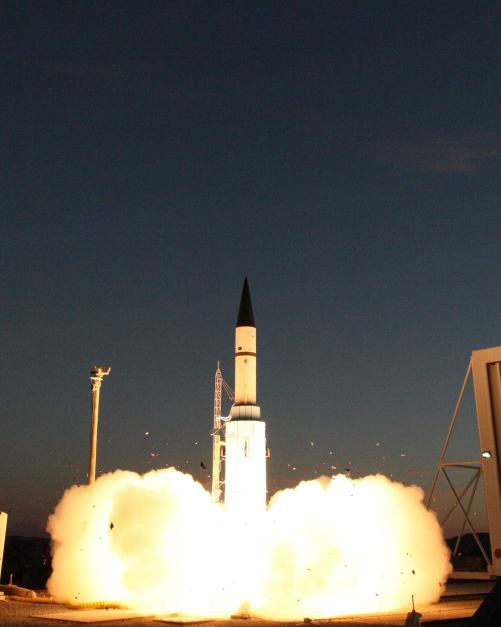F-22Raptor
ELITE MEMBER

- Joined
- Jun 19, 2014
- Messages
- 16,980
- Reaction score
- 3
- Country
- Location
The U.S. Missile Defense Agency (MDA), the Japan Ministry of Defense (MoD), and U.S. Navy sailors aboard USS John Paul Jones (DDG 53) successfully conducted a flight test Feb. 3 (Hawaii Standard Time), resulting in the first intercept of a ballistic missile target using the Standard Missile-3 (SM-3) Block IIA off the west coast of Hawaii.
The SM-3 Block IIA is being developed cooperatively by the United States and Japan to defeat medium- and intermediate-range ballistic missiles. The SM-3 Block IIA interceptor operates as part of the Aegis Ballistic Missile Defense system and can be launched from Aegis-equipped ships or Aegis Ashore sites.
At approximately 10:30 p.m., Hawaii Standard Time, Feb. 3 (3:30 a.m. Eastern Daylight Time, Feb. 4) a medium-range ballistic missile target was launched from the Pacific Missile Range Facility at Kauai, Hawaii. John Paul Jones detected and tracked the target missile with its onboard AN/SPY-1D(V) radar using the Aegis Baseline 9.C2 weapon system. Upon acquiring and tracking the target, the ship launched an SM-3 Block IIA guided missile which intercepted the target.
“Today's test demonstrates a critical milestone in the cooperative development of the SM-3 Block IIA missile,” said MDA Director Vice Adm. Jim Syring. “The missile, developed jointly by a Japanese and U.S. government and industry team, is vitally important to both our nations and will ultimately improve our ability to defend against increasing ballistic missile threats around the world."
Based on preliminary data the test met its primary objective. Program officials will continue to evaluate system performance based upon telemetry and other data obtained during the test.
The flight test, designated SM-3 Block IIA Cooperative Development (SCD) Project Flight Test, Standard Missile (SFTM)-01, was the third flight test of the SM-3 Block IIA guided missile, and the first intercept test. This test also marks the first time an SM-3IIA was launched from an Aegis ship and the first intercept engagement using the Aegis Baseline 9.C2 (BMD 5.1) weapon system.
Aegis Ballistic Missile Defense is the naval component of the U.S. Ballistic Missile Defense System. The MDA and the U.S. Navy cooperatively manage the Aegis BMD program. The Missile Defense Agency's mission is to develop and deploy a layered Ballistic Missile Defense System to defend the United States, its deployed forces, allies and friends from ballistic missile attacks of all ranges in all phases of flight.
https://www.mda.mil/news/17news0002.html
Great job! The SM-3 Block 2a missile offers a significant capability boost against medium and intermediate ballistic missiles.
The SM-3 Block IIA is being developed cooperatively by the United States and Japan to defeat medium- and intermediate-range ballistic missiles. The SM-3 Block IIA interceptor operates as part of the Aegis Ballistic Missile Defense system and can be launched from Aegis-equipped ships or Aegis Ashore sites.
At approximately 10:30 p.m., Hawaii Standard Time, Feb. 3 (3:30 a.m. Eastern Daylight Time, Feb. 4) a medium-range ballistic missile target was launched from the Pacific Missile Range Facility at Kauai, Hawaii. John Paul Jones detected and tracked the target missile with its onboard AN/SPY-1D(V) radar using the Aegis Baseline 9.C2 weapon system. Upon acquiring and tracking the target, the ship launched an SM-3 Block IIA guided missile which intercepted the target.
“Today's test demonstrates a critical milestone in the cooperative development of the SM-3 Block IIA missile,” said MDA Director Vice Adm. Jim Syring. “The missile, developed jointly by a Japanese and U.S. government and industry team, is vitally important to both our nations and will ultimately improve our ability to defend against increasing ballistic missile threats around the world."
Based on preliminary data the test met its primary objective. Program officials will continue to evaluate system performance based upon telemetry and other data obtained during the test.
The flight test, designated SM-3 Block IIA Cooperative Development (SCD) Project Flight Test, Standard Missile (SFTM)-01, was the third flight test of the SM-3 Block IIA guided missile, and the first intercept test. This test also marks the first time an SM-3IIA was launched from an Aegis ship and the first intercept engagement using the Aegis Baseline 9.C2 (BMD 5.1) weapon system.
Aegis Ballistic Missile Defense is the naval component of the U.S. Ballistic Missile Defense System. The MDA and the U.S. Navy cooperatively manage the Aegis BMD program. The Missile Defense Agency's mission is to develop and deploy a layered Ballistic Missile Defense System to defend the United States, its deployed forces, allies and friends from ballistic missile attacks of all ranges in all phases of flight.
https://www.mda.mil/news/17news0002.html
Great job! The SM-3 Block 2a missile offers a significant capability boost against medium and intermediate ballistic missiles.











